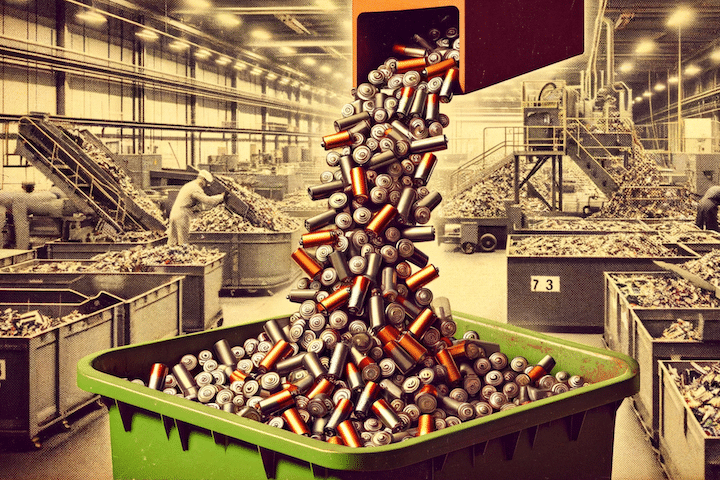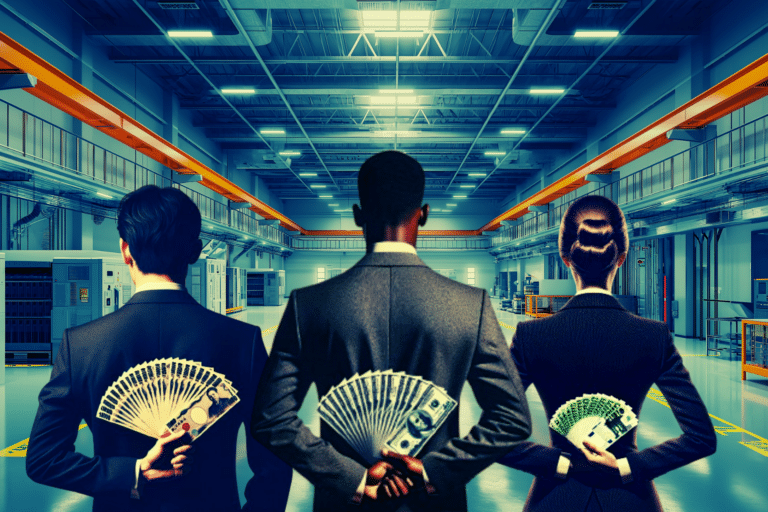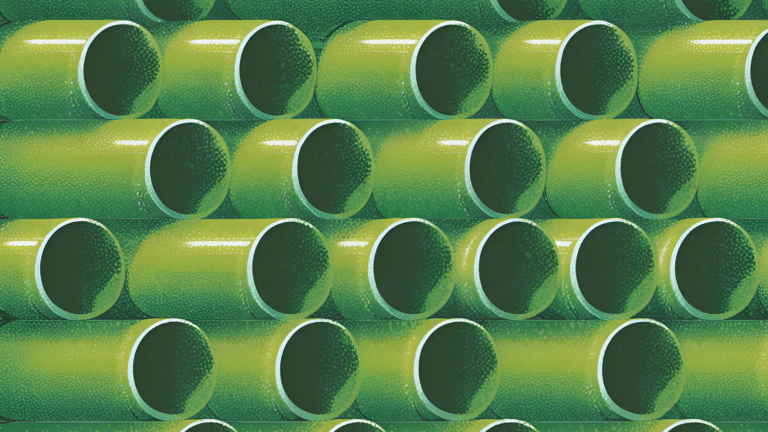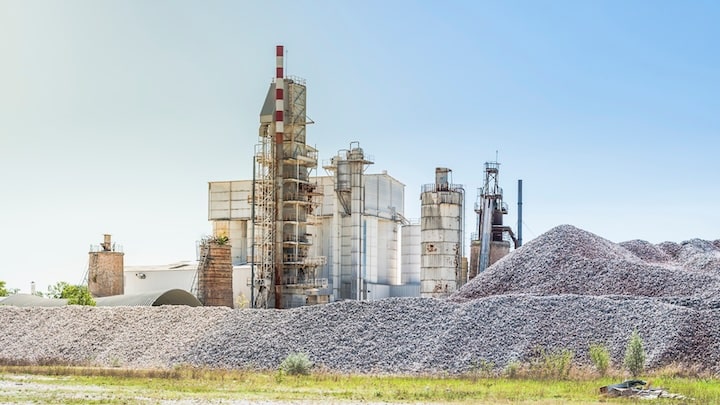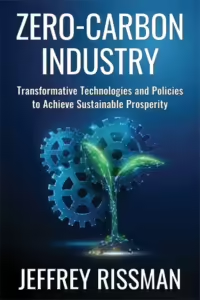Sportscaster: [00:00:03] It’s a fair start and Bolt wastes no time, seizes the lead immediately as they come to the top of the home straight away. [00:00:08][5.7]
Melissa Lott: [00:00:10] Let’s go back to 2009, the World Athletics Championships in Berlin, which is the biggest track and field event outside of the Olympics. It’s the 200 meter sprint, and Jamaica’s Usain Bolt is far and away the favorite. [00:00:21][11.7]
Sportscaster: [00:00:22] But again, no contest. No contest. Lightning strikes twice as he crosses the finish line. My gosh, darn it. 19.20. Another world record for U.S. Bolt. [00:00:33][11.5]
Melissa Lott: [00:00:34] The announcer is saying no contest. No contest because U.S. Bolt has been racking up medal after medal since the 2008 Olympics. And he’s making it look easy. [00:00:43][8.7]
Sportscaster: [00:00:43] And U.S. Bolt has now broken his fifth world record in 12 months. [00:00:48][5.1]
Melissa Lott: [00:00:49] So why are we talking about Usain Bolt on a show about decarbonizing the economy? Because we love a good metaphor. And right now there’s a Usain Bolt in the steel industry that’s turning heads a technology that’s flashy and confident and maybe even a little cocky, one that looks poised to blow past its competitors in the race to zero carbon steel. The technology. Hydrogen. [00:01:10][20.3]
Stock news anchors: [00:01:14] We really have to talk about the big buzzwords in the world of energy hydrogen, hydrogen. Hydrogen. Hydrogen, the wonders of hydrogen. Hydrogen has been hailed as a fuel of the future. Hydrogen. Green. Hydrogen. Green. Hydrogen. Hydrogen. Hydrogen. Hydrogen. Hydrogen. Hydrogen. Green. Hydrogen. Everybody is so excited about hydrogen. [00:01:35][21.8]
Melissa Lott: [00:01:44] This race to Green zero carbon steel is a really big deal. Cleaning up the steel industry would mean that we could cut global carbon pollution by 8%. That’s more than the total greenhouse gas emissions from India. And some steel companies are betting big that hydrogen will be the one to pull it out. [00:01:59][15.0]
Stock news anchors: [00:02:00] Momentum has been built around hydrogen. [00:02:01][1.5]
Melissa Lott: [00:02:05] But will it live up to the hype? This is the big switch. I’m Dr. Melissa Lott and I’m the director of research at Columbia University’s Center on Global Energy Policy. And I study the technologies and systems that power our world. Our lives are built around steel. [00:02:25][20.1]
Julia Atwood: [00:02:26] Steel is the most important metal in the world because it is used in pretty much everything. And aside from cement, it’s the most widely used and made material in the world. [00:02:38][11.8]
Melissa Lott: [00:02:39] This is Julia Atwood. She works at a market research company called Bloomberg New Energy Finance. She’s their head of Advanced Materials and spends a lot of her time on steel. [00:02:48][8.8]
Julia Atwood: [00:02:48] It’s the workhorse of the material world. [00:02:50][1.8]
Melissa Lott: [00:02:51] Decarbonizing Steel is also essential because we need it to decarbonize the world. Think about it. Solar panels, electric vehicles, even our power grid still goes into everything we need to fight climate change. But here’s the problem. Steel manufacturing uses a huge amount of fossil fuels today. The good news? Steel has a clear path to going green. It’s not an easy path, but it’s a straight one. Any conversation about decarbonizing an industry has to start with a basic question How much of this material do we actually need? Julia says when it comes to steel, it’s not as much as we think. [00:03:27][36.4]
Julia Atwood: [00:03:28] There’s just making everything with less steel. So that’s making your tin cans a little bit thinner, making your cars a bit smaller. [00:03:36][7.7]
Melissa Lott: [00:03:36] We can always find ways to use less. But Julia says that being more efficient with our steel isn’t going to be enough. [00:03:42][5.5]
Julia Atwood: [00:03:43] I don’t think we’re actually going to make a lot of things better, not enough to make a real difference. I think there you’re thinking about like a ten or 20% improvement. [00:03:51][8.1]
Melissa Lott: [00:03:52] Which means that we need to drastically change the way we make steel to reduce carbon emissions, to fight climate change. And we need to do it really fast. There are four key technologies in this race to Green Steel, four major competitors. The two that we all know about. [00:04:10][17.9]
Julia Atwood: [00:04:10] You’ve got recycling. You’ve got carbon capture. [00:04:13][2.3]
Melissa Lott: [00:04:14] And the two that almost nobody knows. [00:04:15][1.7]
Julia Atwood: [00:04:16] You’ve got hydrogen and then you have electrolysis. [00:04:18][2.2]
Melissa Lott: [00:04:23] Recycling was the first competitor to enter the race. [00:04:25][2.0]
Julia Atwood: [00:04:31] So if we were to think about these technologies as a bunch of people lining up on the start line, recycling would be like, you’re veteran sprinter. [00:04:39][8.8]
Stock news anchors: [00:04:40] Every year in Britain, half a million old cars are scrapped or left abandoned by their owners in city streets in country Lane in Woods and Heath that. [00:04:50][10.1]
Melissa Lott: [00:04:51] In past episodes we’ve talked about recycling in the context of concrete and chemicals. And in those industries, recycling just doesn’t have a big role to play. It can help you a bit, but it’s not out in front in steel. It’s really different. [00:05:04][12.8]
Stock news anchors: [00:05:05] The man in the street may well ask why scrapping old cars should be such a problem. After all, he pays anything up to £1,000 or so for his new car and it’s raw material must surely have some scrap value. Well, they do. [00:05:19][14.3]
Julia Atwood: [00:05:20] Steel is actually one of the best recycled materials in the world compared to plastics, where you’re recycling maybe 10% of it. Steel is like 80 or 90% recycled. That’s because it’s easy to identify. You can pull it out of a hunk of other scrap with a magnet, and then you just return it to the manufacturers. They’re putting it in a furnace, turning it into recycled steel. [00:05:44][24.1]
Melissa Lott: [00:05:45] Back in the day, recycling was a dirty process. You’d melt down the steel and these giant coal fired furnaces. But nowadays they can use these things called electric arc furnaces. And the great thing about them is that they can be powered with renewables. [00:05:58][13.2]
Julia Atwood: [00:05:59] Electric arc furnaces can use intermittent power, so they’re great if you just plug them into wind and solar because you’re making the steel in batches. [00:06:07][7.6]
Melissa Lott: [00:06:07] But we need more steel than recycling can generate. [00:06:10][2.2]
Julia Atwood: [00:06:15] We make about 2 billion tonnes of steel today every year. We think by 2050 that’s going to peak and level out at about 3 billion tonnes. [00:06:25][10.1]
Melissa Lott: [00:06:26] We just don’t have enough steel to meet the demand for more cars and more buildings and more transmission lines. So Julia says that this veteran sprinter probably won’t be the one to get us to zero carbon steel. [00:06:36][10.4]
Julia Atwood: [00:06:37] The guy who’s been around, he’s done all the big races when maybe his best days are behind him. [00:06:42][4.8]
Melissa Lott: [00:06:44] Which brings us to the next contender, Carbon Capture and Storage or. [00:06:47][3.5]
Julia Atwood: [00:06:48] The most controversial pick in the race. Maybe someone who’s been done for performance enhancing drugs a few times, you know, has brought everyone’s hopes up and them and disappointed. [00:06:58][9.6]
Melissa Lott: [00:07:00] About a decade ago when concerns about climate change were ramping up. People started asking questions about carbon. Couldn’t we just capture the CO2 coming out of the smokestacks and industry and coal fired power plants and stored away somehow? Maybe we could lock it underground where it wouldn’t escape. And they tried to use carbon capture and storage for something called clean coal. [00:07:23][23.3]
Barack Obama: [00:07:23] Clean coal technology is something that can make America energy independent. We can we will clean coal, America’s power. [00:07:32][8.9]
Melissa Lott: [00:07:34] But this idea of clean coal hasn’t really panned out. It has a bunch of really high profile failures and cost overruns and shelved projects. [00:07:41][7.6]
Stock news anchors: [00:07:42] The track record, I’m afraid, globally is overall overwhelmingly one to failure. [00:07:46][3.8]
Julia Atwood: [00:07:47] Two things to know about carbon capture are that, one, the technology can work. It’s been shown to work. And two, it’s been nearly impossible for it to work profitably. [00:07:55][8.1]
Melissa Lott: [00:07:56] Critics, of course, have also raised concerns that using this technology would mean that we’re locking in fossil fuels and also that the technology doesn’t work everywhere in the world, which is why so far CCS just hasn’t taken off. But many in the steel industry, as well as experts like Julia, believed that cost could still play a role in cleaning up steel because they think that the technology is a better fit for industry than it was for coal fired power plants. So let’s rewind back to 2015. At that time in the steel industry, CCS was still considered a frontrunner. But in Sweden, one steel company executive had an idea for a different solution, one that didn’t require any fossil fuels. [00:08:34][37.6]
Martin Pay: [00:08:38] When I grew up, I was very much fascinated by steelmaking. [00:08:42][4.8]
Melissa Lott: [00:08:43] Martin Pay is chief technology officer at the Swedish steelmaker SS AB. Martin knew CCS wasn’t the solution, and he claimed that he had a better idea, but nobody was buying it. [00:08:54][10.4]
Martin Pay: [00:08:54] Then there were quite a lot of people so skeptical. They said this is not possible. [00:08:59][5.1]
Melissa Lott: [00:09:00] To understand why no one believed this idea that Martin and his Swedish colleagues were toying with. You have to understand how steel is made. So when we talk about the process of making steel. Can you help me to visualize what’s involved? And to understand where do the emissions come from in that whole process? [00:09:23][22.7]
Julia Atwood: [00:09:24] The place to start is always with mining. So there you’re digging these massive rocks out of the ground and they look nothing like steel. They’re probably red, they’re sandy. They genuinely just look like rocks. Then those get funneled into a furnace, and that is where the reduction happens. That is where iron ore that you dug out of the ground becomes iron. So you’re removing the impurities, You’re removing the oxygen. That takes a lot of heat and it often takes coal. So this is the highest emitting part of the process. It’s the most energy intensive. This is where you have to focus your attention. If you care about emissions and what’s coming out of that is iron. And so then you have these much nicer looking, orderly pellets that are going into a second furnace. [00:10:19][55.5]
Martin Pay: [00:10:20] Like small balls. LIBBY Smaller in size than strawberry, and that goes into this sub furnace. [00:10:28][8.0]
Julia Atwood: [00:10:29] Now that furnace can run on electricity or you can run it on whatever you have to hand, but that is just where you’re mixing in the extra ingredients to make your iron into steel. There’s a lot of general heat in that process which causes some emissions. But this isn’t the major source. This is the finishing touches, the icing on the cake. After that, you have steel and it’s normally in a giant coil, and that huge coil is then rolled away somewhere to become sheets of steel or to become structural beams or to become the pieces of metal that go into your lamps and your chairs. [00:11:08][39.5]
Melissa Lott: [00:11:09] What Martin, his team wanted to do was try to replace the coal in the steel making process with something else. This is the third competitor in the race, Hydrogen. Remember, you st bolt from the top of the show. Well, hydrogen is Usain Bolt. It’s a gas that’s giving coal a serious run for its money. [00:11:27][18.3]
Julia Atwood: [00:11:28] Part of the beauty of hydrogen is that you can use it in some plants that are existing today. So it’s really just a switch in what kind of gas you’re pumping in. And everything is colorless and odorless. So you don’t see much of a change. The way that that works is you would push the hydrogen gas over your hot iron ore and the hydrogen atoms would swoop in and grab the oxygen and remove it. So it’s becoming water. You see these big, you know, kilns that are heating up with a red hot molten metal and it feels very industrial. Now it feels like a bond villain’s lair where his making his new weapon, except you’re just making steel. [00:12:14][46.3]
Melissa Lott: [00:12:15] And here’s the other beautiful thing about hydrogen. It can be made with 100% clean energy. All it takes is sending some electricity through water. So picture this water is H2O. You shoot electricity through it and you separate the HS, and he goes, leaving you with hydrogen and oxygen. So if hydrogen is such a good replacement for coal, why are people so skeptical of Martin Pay and his team? Because that zero carbon process of making hydrogen the splitting apart that water with electricity, that takes a lot of energy. [00:12:47][31.6]
Martin Pay: [00:12:53] When I started to explain, not that we we want to replace coal that we use and we want to use electricity. It’s going to take about 10% of Sweden’s total electricity consumption. [00:13:09][15.4]
Melissa Lott: [00:13:10] That’s a huge amount of electricity. The other big concern was that making steel with hydrogen would be so much more expensive compared to making steel with fossil fuels because of those really big electricity requirements and high costs. The industry insiders thought that switching to hydrogen was absolutely bonkers. [00:13:27][17.6]
Martin Pay: [00:13:28] I heard that, oh, these are your your idealistic people from Scandinavia and you’ll go ahead and we don’t believe you’ll. [00:13:38][10.5]
Melissa Lott: [00:13:46] It took a few more years before hydrogen gained traction, but when it did, it came in with a lot of flash. [00:13:51][5.5]
Stock news anchors: [00:13:52] Our mission is to harness the power of hydrogen in steelmaking. This is a new giant step. A couple of years ago, which was seen as a crazy idea. Hydrogen, a key to decarbonization and a game changer for steelmaking. [00:14:07][15.0]
Melissa Lott: [00:14:10] Today, every steel manufacturer in Europe and others around the world are piloting hydrogen projects like these. So what happened? Well, first we had big steel customers actually demanding greener steel, specifically automakers. [00:14:23][13.5]
Martin Pay: [00:14:27] The last couple of years, when the automotive industry has finally made up their mind, electrification of personal cars is the way to go. But then the carbon footprint of a car got focused on the carbon footprint of the car itself. And the biggest carbon footprint in the car is actually steel. So then we saw very clearly, mark to the customers start to approach us. [00:14:57][30.4]
Melissa Lott: [00:14:57] And these customers, SSP alone is partnering with Volvo, a big name brand, but also a Tesla competitor called Polestar. Other big automakers like Mercedes-Benz and BMW, are looking into green steel, too. [00:15:09][11.5]
Julia Atwood: [00:15:10] This is a company talking to another company and saying, I need green steel, I need lower emission steel, or I’m going to go to somebody else to get it. And then what’s convincing the automakers is really policy. Automakers in Europe are being told that they’re not just going to be judged on their tailpipe emissions, but on their whole life cycle emissions. So what kind of materials they’re using matters. [00:15:35][25.2]
Melissa Lott: [00:15:36] This demand from consumers is a key reason why steel makers have decided to invest heavily in zero carbon technologies. And governments, which are some of the biggest consumers in the steel, are promising to pay for this green steel to essentially steel manufacturers. Well, they saw the writing on the wall. [00:15:52][15.7]
Julia Atwood: [00:15:52] Steel makers are afraid of their competition. They’re afraid of becoming obsolete if they don’t move with the times. [00:15:58][6.2]
Melissa Lott: [00:16:03] And so the question was what zero carbon technologies would steel companies bet on? Recycling could only go so far, and CCS was still expensive, controversial and difficult. But hydrogen, on the other hand, was becoming more and more appealing. [00:16:17][13.8]
Julia Atwood: [00:16:17] Hydrogen has a lot of advantages. The simplest way to put it is that we think by 2050, making steel with hydrogen could be the cheapest way to do it. [00:16:27][9.7]
Melissa Lott: [00:16:28] Cheapest because hydrogen itself will become so cheap to make. And this is because of mostly two things. First, we can make hydrogen using zero carbon electricity, and that process is getting better and more affordable. And second, electricity is getting cheaper. And the cheaper the electricity, the cheaper the hydrogen. As we keep bringing on so many wind turbines and solar panels, we’re seeing the cost of zero carbon electricity drop. [00:16:50][22.6]
Julia Atwood: [00:16:51] There’s a chance that it could outcompete today’s production just on cost without needing subsidies, without even meeting them to change some of their equipment. So it could be really cheap. [00:17:01][10.3]
Melissa Lott: [00:17:02] One place it’s a leader in cheap and plentiful zero carbon electricity is Sweden, where SSP is located. It has a lot of hydropower and nuclear. And Martin Pay believe that having that zero carbon power would make it possible to generate a lot of zero carbon hydrogen for steel. [00:17:17][15.1]
Martin Pay: [00:17:18] I was really convinced that under certain circumstances, this approach will be commercially relevant and earlier than other places. And Sweden is such a sweet spot, we call it. [00:17:35][17.1]
Melissa Lott: [00:17:35] This is why Martin pays company SSA B is building 100% carbon free steel plant right now in Sweden. It’s called Hybrid and it’s slated to begin operation in 2026. No surprise they’re going to be using hydrogen instead of coal. And many other steel manufacturers are lining up to give this front runner a try. The hope is that projects like hybrid will show the rest of the world that hydrogen is the technology to use in steelmaking. [00:17:59][23.8]
Julia Atwood: [00:18:00] Hydrogen is the Usain Bolt. In this analogy, the. [00:18:04][4.1]
Stock news anchors: [00:18:04] Greatest sprinter of all time. [00:18:06][1.5]
Julia Atwood: [00:18:07] Flashy. Everyone wants a piece of him throwing kisses to the crowd. Everybody thinks the winner by far. [00:18:15][8.5]
Sportscaster: [00:18:16] Obviously with a flair for the dramatic. The reason why we close track and field meets around the world now is because they want this guy on your screen to have the last say. [00:18:26][9.9]
Melissa Lott: [00:18:27] Well, completely shift the steel industry. Is there. [00:18:29][2.4]
Sportscaster: [00:18:29] No one on this planet, Tom Hammond, to challenge this young man. [00:18:33][3.4]
Melissa Lott: [00:18:35] Or not? Because there’s a fierce competitor and he’s right next to you. Same bolt. [00:18:40][4.7]
Julia Atwood: [00:18:45] Next to him, you have the scrappy little electrolysis guy who can’t quite believe he’s there with all of these amazing other stars, but huge potential. [00:18:57][11.4]
Melissa Lott: [00:18:58] Maybe even the potential to outcompete hydrogen. It’s a technology that skips coal and hydrogen altogether and electrolysis. You send electricity right through molten iron ore. [00:19:08][10.3]
Julia Atwood: [00:19:08] It’s futuristic, it’s buzzy, it’s shiny. Because the way that that works is you just have your hunk of molten metal mixed in with a few other things. And then you have two electrodes that you stick in to it and you run an electric current through that. And then one side becomes positive and one side becomes negative. Going back to high school chemistry and physics here. And so all of your metal is attracted to one side and all of your impurities are attracted to the other side. So they’re like rushing away from each other to get to the lecture that they like best. And so what you end up with is all of your impurities coming off as gases on the one side and all of your metal at the other. [00:19:53][44.5]
Melissa Lott: [00:19:54] The thing is, this is a really early stage technology in the green steel race. [00:19:58][3.8]
Julia Atwood: [00:19:58] Like Turin of t shirt, tiny shoes at the last minute, trying to get ready. [00:20:02][4.0]
Melissa Lott: [00:20:03] If the technology improves fast enough, it could outcompete hydrogen, but it’s got a long way to go. If we look at this issue from 30,000 feet, none of these technologies can clean up the steel industry single handedly. 20 years from now, we might see a 70, 80 or even 90% reduction in steel emissions. But it won’t be because recycling or CCS or hydrogen or electrolysis cross the finish line first. [00:20:29][25.8]
Julia Atwood: [00:20:33] I do think it is a race, but I think it’s a relay race because a lot of these things, you just exhaust their potential after a while. [00:20:41][8.2]
Melissa Lott: [00:20:42] A relay race. All of these technologies working together to get us to net zero steel. [00:20:47][4.7]
Sportscaster: [00:20:47] So the two fastest countries of all time into the blocks with the Olympic gold medal in the balance. [00:20:53][6.2]
Julia Atwood: [00:20:55] So with recycling, you’re limited by how much scrap you can get. We can’t just start tearing things down in order to recycle them. So it’s like the veteran sprinter, the recycler, he does the first leg and there’s the gun. For Jamaica, Timmons For the U.S. And that’s what companies are doing, the recycling more. But you’re going to get to the end of what you can do there, and then maybe you pass off to carbon capture. [00:21:19][23.9]
Sportscaster: [00:21:20] Here comes the first Baton Exchange. Justin Gatlin takes the baton for the United States by then. [00:21:25][5.8]
Julia Atwood: [00:21:26] That’s when you have Usain Bolt in the protegé. You have hydrogen and you have electrolysis. [00:21:31][4.4]
Sportscaster: [00:21:32] You have the 50 U.S. has a little bit of the. Tom Galvin has done the job down the backstretch. Here’s Tyson Gay for the U.S.. Yohan Blake for Jamaica. It’s the U.S. and Jamaica, right? [00:21:42][9.3]
Julia Atwood: [00:21:42] I don’t envy the coach trying to figure out which one of them to put in last. Here come the anchors. It will be Usain Bolt against Ryan Bailey. Because when we are looking at these technologies, there are some instances where electrolysis is way better. There are some instances where hydrogen is way better. [00:22:00][17.8]
Melissa Lott: [00:22:01] And right now, hydrogen, our technological Usain Bolt is out in front. [00:22:05][3.8]
Sportscaster: [00:22:05] And here’s Bolden neatly side by side through the homestretch straightaway and both edges ahead. [00:22:10][5.1]
Melissa Lott: [00:22:21] So let’s recap. Manufacturers are in a race to green steel. Why? Because customers are demanding it. Traditionally, to make steel, they would heat up iron or two really hot temperatures and they combine it with coal to turn it into iron. And this is where the vast majority of emissions come from in the steelmaking process, which means it’s where we need to focus our efforts. So there are four options to get us there. One, we can use less steel. Two, we can recycle as much steel as possible using electric arc furnaces powered by zero carbon electricity. Three, we can capture the carbon dioxide from steel plants and stored underground. And four, we can completely replace the fossil fuels in steelmaking, either with hydrogen or electrolysis, or maybe both. But the most important thing for the industry is just to get moving. Is this like you want to be Usain Bolt? You got to get off the couch today and start training. [00:23:15][54.2]
Julia Atwood: [00:23:15] Kind of Exactly. Coach to five K immediately. [00:23:18][3.0]
Melissa Lott: [00:23:20] Yes. And that’s our show. Next up on the big switch, hydrogen. The big switch is produced by Columbia University’s Center on Global Energy Policy in partnership with Post-Script Media. This episode was produced by Daniel Waldorf and Dalvin Abo AJ. The story editing was by Ann Bailey, Mixing and scoring by Sean Marquand and Greg Bill Frank. Theme Song by Sean Marquand. A special thanks to our Columbia team Kirstin Smith, Lee, Liz Smith and Natalie Volk. Our managing producer is Cecily Mesa Martinez and our executive editor, Stephen Lacy. Another special thanks to our favorite sprinter. Hopefully he likes our metaphor. [00:23:59][39.2]
Julia Atwood: [00:24:00] Let’s hope Usain Bolt doesn’t add me on Twitter. I’m not hydrogens. [00:24:03][2.8]
Melissa Lott: [00:24:04] I’m Dr. Melissa Lott. And this is the big switch. [00:24:04][0.0]
[1292.4]




